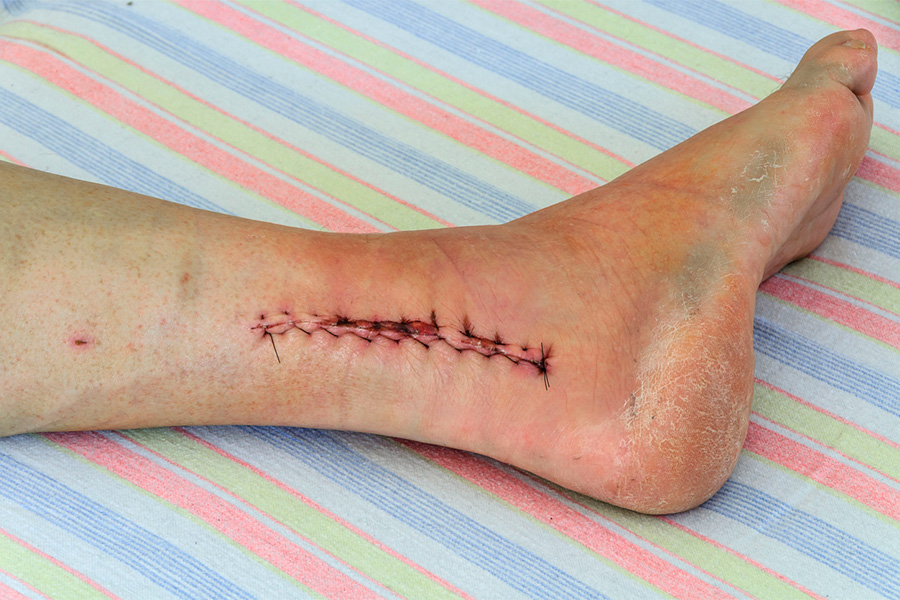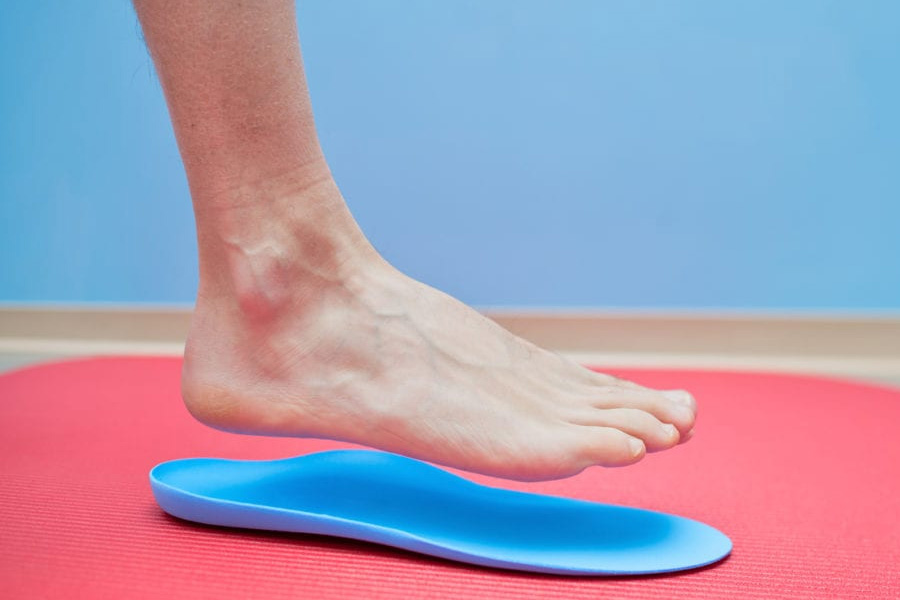what you can expect
Your ankle is a highly flexible and complex joint that has several tendons holding the bones in place. The joint also must support the weight of your body when you sit, stand, and walk.
So with all of that pressure and movement, the ankle is susceptible to injury. Doctors typically treat about a million Americans for ankle problems every year.
A sprained ankle is the most common type of sprain in the body, and it is also the most common type of injury to the ankle – but the joint can also suffer other types of injuries, such as fractures and arthritis. Severe sprains and other injuries sometimes warrant surgery in order to achieve complete and proper healing.
If you’re considering having ankle surgery or are scheduled to have it done, let’s talk about what you can expect, how it works, and where you can go in Cincinnati for outstanding foot and ankle surgery.

Types of Ankle Surgeries
Your foot and ankle doctor will first assess your orthopedic condition before recommending which treatment you may want to consider. Each type of ankle surgery has its unique applications:
Ankle Replacement
In an ankle replacement, your foot surgeon will replace your entire ankle joint with prosthetic materials. An artificial joint helps you retain your range of motion while greatly alleviating or completely eliminating your ankle pain.
Ankle replacements are typically best for people who have severe arthritis or complex ankle injuries.
Ankle Arthroscopy
Arthroscopy is a minimally invasive surgical procedure that is both a diagnostic and treatment method. Your foot surgeon will create a relatively small incision in your ankle, through which they will insert a thin tube called an arthroscope. This tube has a fiber-optic camera functionality at the end of it, allowing the foot surgeon to view, assess, diagnose, and treat problem areas in your ankle.
Arthroscopy is very versatile and can address arthritis, ankle injuries, and causes of ankle pain.
Ankle Fracture Repair Surgery
Foot surgeons can perform ankle surgery to stabilize the broken sections of bone in a fracture. You can expect your orthopedic doctor to implement various tools, such as medical screws, plates, rods, or pins to help keep your bones in place so they heal correctly.
Lateral Ankle Ligament Reconstruction
Patients who have chronic ankle instability might need ligament reconstruction or repair. Ankle instability is typically the result of weakened or loose ligaments due to multiple sprains, injuries, or foot deformities. In this procedure, your ankle surgeon will make small incisions in your foot, then tighten the ligament.
Benefits of 3D Scanning for Custom Orthotics
While our podiatrists are experts in a variety of techniques for creating foot impressions for custom orthotics, such as plaster casting, we recommend 3D scanning—for a number of good reasons, such as the following:
- Provides quick results- Allows for faster production of orthotics, so you can wear them right away
- Ensures optimal precision- Helps ensure better-quality, more comfortable orthotics
- Yields comprehensive information- Provides you with details about your gait, pressure points, sizing, arch type, pronation, etc.
- Environmentally friendly- Results in less material waste compared to traditional casting methods
Ready to reap the benefits of 3D scanning for your custom orthotics? Schedule a consultation with one of our other podiatrists today. Call us at our clinic nearest you or use our convenient appointment request form.
Preparing for Surgery
Your doctor may have some specific prep instructions for your ankle surgery, including one or more of the following:
Current Medication Modifications
Your doctor may ask you to briefly and temporarily stop taking specific types of medications prior to the surgery, especially blood thinners. Blood thinners interfere with your blood’s ability to clot, but this will be necessary for your recovery and healing. Also, some medicines may interfere with the anesthesia you receive during your operation.
Diet
Proper nutrition can help you recover more quickly from ankle surgery. It’s best to follow a healthy diet for at least several weeks before your surgery and to continue following it while you recover.
Planning for Recovery
You will need to ask for help from friends or family with daily tasks, such as driving or household activities. Also be sure to remove any tripping hazards around the home, such as throw rugs or objects. You will need plenty of room to walk around with crutches or a walker at first.
After the Surgery
You can expect swelling, pain, or numbness in your foot area once the anesthesia wears off. You will likely be advised to keep your foot elevated while sitting or lying down in order to control swelling.
While recovering, it’s best to do the following:
- Take your prescribed medications for pain and antibiotics
- Rest often
- Move around carefully
- Don’t strain your ankle
- Attend all of your follow-up appointments
- Communicate with your foot doctor about anything unusual or concerning
Ankle Surgery in Cincinnati, Ohio
At Cincinnati Foot & Ankle Care, our highly skilled podiatry surgeons are here to give you the best treatment and the best outcomes. We have many locations across the Cincinnati area, including in Finneytown on Winton Road.
To schedule an appointment with one of our foot and ankle surgeons, call our podiatry clinic nearest you or fill out our convenient online request form. We look forward to hearing from you!
Share

Surgeons can provide both surgical and nonsurgical care.

Orthotics can be very helpful in relieving pain and improving foot health.



